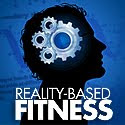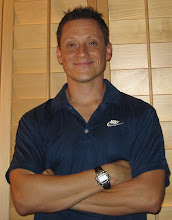Today (Sunday) ended a 3-day seminar by Erik Dalton that I took with my friend and colleague Patrick Ward (http://www.optimumsportsperformance.com/site/index.htm)
who like myself, is a conditioning coach and and a licensed massage therapist. We were very eager to take a semianr from Erik since we've heard that he had some pretty interesting ideas on treating soft-tissue dysfunction in the body. The seminar was called: Myoskeletal Alignment for Neck, Sciatic and Leg Pain.
Who is Erik Dalton?
Erik Dalton, has a Ph. D in Psychology and has been in the bodywork industry for a few decades. His early training was as a Rolfer with a heavy emphasis on fascia and connective tissue work. He also trained and was heavily influenced by Osteopathic manipulative treatments which eventually led him to formulate his own "hybrid" massage system called "Myoskeletal Alignment Technique." All in all, Erik has a vast background in pain -relief massage techniques and we were excited to start day one.
This first day was dedicated to neck problems or "neck cricks," as many people commonly call them. We learned various passive mobilizations for the joints of the neck first followed by some specific fascial and soft-tissue mobilizations for commonly tight tissues. I was quite impressed with Erik's knowledge of the anatomy and the injury process after day one but was not impressed that we were only given a handout with written explanations of the techniques we had just learned; there were not any pictures in these handouts. What annoyed me quite a bit was that much of the time before we watched Erik work on acutal class participants, we simply viewed his DVD's in which he performed the protocol soon to be practiced.
Also, little to no assessments were shown for the techniques we were learning and were constantly reminded by Erik that we could get the rest of the information on his various DVD's, which were very expensive. For a $400 seminar on advanced topics, I was expecting a little more in terms of support material. Oh well!
Day 2 started with a review of Day 1 infromation which was nice since all we had were crappy handouts to review. This day focused on various spinal release techniques (many from the Rolfing world, which was cool to see) and included complex releases positions for sacral problems. As usual, no assessment information was given on when and how to really use the specialized techniques. I've been in the bodywork industry for over 10 years now, and let me tell you, the sacrum and how it moves is VERY COMPLICATED! Most therapists who don't have his DVD's probably will get nothing out of those techniques whatsover. Day 2 ended with Erik working on an acutal client of one of the participant therapist who wanted Erik to "figure out" what the heck was wrong with the guy.
This is when things got very interesting and terrifying at the same time. Erik basically got this client ( a young man in his early 20's) on the table and just started romping him around in a very aggressive and robust way. The techniques included some violent "leg yanking" procedures that are more in the realm of a Chiropractor. The grand finale included a pillow case being wrapped around this guy's neck for a supposed "traction" of the neck. The whole room gasped as Erik suddeny yanked this poor guy's neck so hard that he almost flew off the table as his legs jerked in the air and he had a look of shear terror on his face. This was absolutely NOT A LEGAL mobilization to perform in my opinion since Mr. Dalton holds no licenses to perform high-velocity (Grade 5 Mobilizations) thrusts techniques that are more in the realm of Chiro's and DO's, not massage therapists! I've never seen such a thing from such a reputable therapist; EVER!
After that, Patrick and I were pretty shocked and wondered what day 3 would hold. The final day started with Erik talking about his opinion on Core Stability training and how it's all a farce now according to recent research. He just left most people more confused that they probably were to start with and clearly didn't have all the facts straight. The rest of the day included very interesting rolf-based leg, foot, posterior thigh, and sacrum techniques that again, were preceeded by no assessment information on when to use the specific techniques. But if we, I know, I know, buy his DVD's, we could get all that information, GREAT!!!
All and all, I got a lot of cool techniques that I will integrate into my massage toolbox. I will never take another seminar from Erik Dalton again however for the various reasons I've repeatedly mentioned. I may even purchase his enfamous DVD's one day since he really does have some interesting techniques on how to treat various painful conditions of the body. He is a very bright man but not too bright in some respects. As a finishing touch to the seminar, near the end of day, my friend Patrick challenged Erik on a simple straight-leg hip-extension test (a la Vladamir Janda) and almost had his head bit off. This guy couldn't handle anyone challenging him and he really flew off the handle. I was even more UNIMPRESSED of him after that. It was a strange weekend to say the least.
Sunday, March 29, 2009
Tuesday, March 10, 2009
Review of Eat-Stop-Eat
 I recently purchased and read the e-book Eat-Stop-Eat from nuritionist Brad Pilon. I first heard Brad interviewed a little while back on a podcast (can't remember which one, sorry) where he explained his method for losing bodyfat called flexible-intermittant-fasting. Needless to say I was intrigued since much of what Brad was saying was flying in the face of nutrional recommendations that I subscribe to and have used for years!
I recently purchased and read the e-book Eat-Stop-Eat from nuritionist Brad Pilon. I first heard Brad interviewed a little while back on a podcast (can't remember which one, sorry) where he explained his method for losing bodyfat called flexible-intermittant-fasting. Needless to say I was intrigued since much of what Brad was saying was flying in the face of nutrional recommendations that I subscribe to and have used for years!Listening to Brad speak definately gave me a case of congnitive dissonance, which is that feeling you get when something contradicts a deeply held set of beliefs or convictions. Being very much a science and evidence-based person, I knew that I needed to examine my own nutritional beliefs. For years I have recommended and followed the principles of meal frequency(4-6 small meals/day) to control blood sugar, build muscle, and lose bodyfat. This methods has worked pretty well for me and many I have recommended it to.
Brad's basic view however, is that this style of eating promotes a chronically elevated insulin level, which can increase fat stores as well as increase inflammation and other negative health markers in the body over time. I'm not sure I buy into this completely as I don't seem to have any of those effects (not yet at least). But from an evolutionary perspective, it kind of makes sense that are bodies are meant to go for longer periods of time without food. And this is where Brad's system of flexible-fasting come in to play. He simply advises to choose one or two non-consecutive 24-hour periods (at most) per week to restrain from food while drinking non-caloric beverages liberally. He even advises exercising on these days!
While this sounds brutal to some (as it did to me), the results people are getting on his program seem pretty significant. What's kind of refreshing too, is that Brad simply dismisses many of the myths about short-term (24 hour periods) fasting such as:
1) you'll lose muscle (he says you won't, especially if you are resistance training 2-3x/week)
2) you'll enter the starvation mode and then store fat next time you eat (not so according to Brad who gives many scientific references to back this up_
3) you'll feel terrible and have no energy (after the few fasts, he says you feel great and get a lot of work done without worrying about eating all day)
Also, Brad dismisses much of the debate over protein, carbs, and fat intakes and simply recommends eating a healthful diet (lots of fruits and veggies, lean proteins, etc..) on the days you eat without any real need follow any strange and restictive diet plan with expensive supplements and fibers pills, etc... The one or two 24-hours periods you don't eat make for a great caloric deficit over the course of the week that you will lose fat. The real key is to eat normally on your regular days and not try to "make-up" for lost feeding opportunities. Also, you never actually need to miss a day of eating. Instead, Brad recommends choosing a time, say 2 PM one day until 2 PM the next day to fast. Any time will work though, according to Brad.
I will give this eating plan a try once my track season is over and report my findings in my blog. I'm not trying to lose weight per se but maybe will lose a little "love-handles" fat that I've accunulated as I got into my 30's. I haven't had any clients try it yet but am starting to think this might be a great eating style for many of fat-loss clients or anyone who wishes to save money on their grocery bill!
To read more about this very fascinating book or to purchase your own copy, go to
http://www.eatstopeat.com/?tid=newblog or Brad's personal blog: http://bradpilon.com/ to read more about his recommendations.
Subscribe to:
Posts (Atom)






